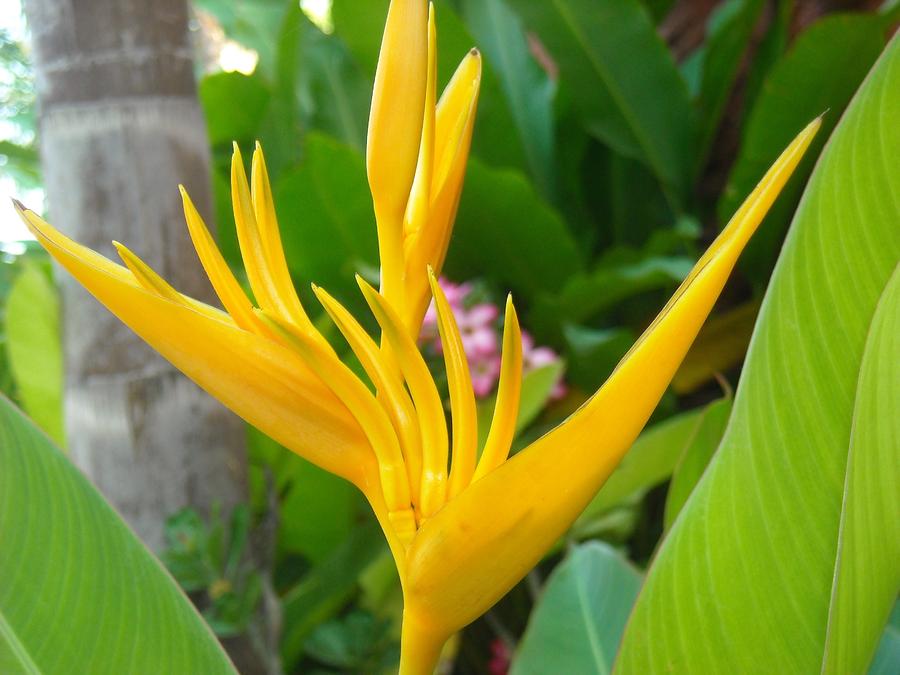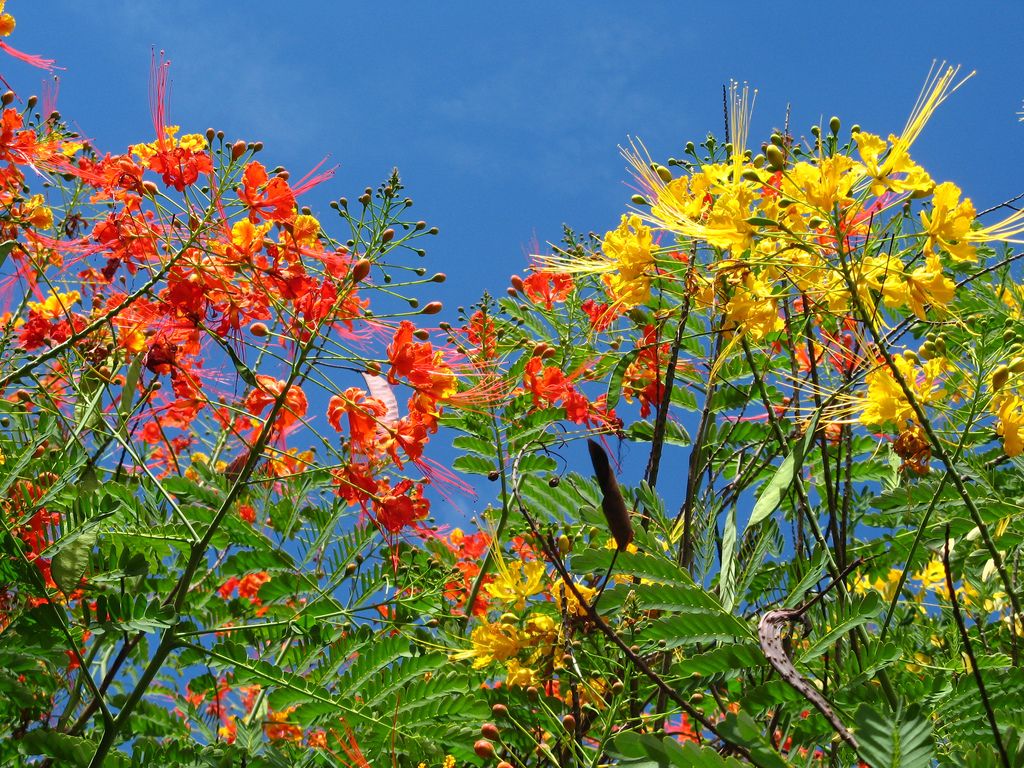The Mexican Bird of Paradise, scientifically known as Caesalpinia pulcherrima, is an exquisite and vibrant plant renowned for its striking yellow flowers. This ornamental shrub is native to the tropical regions of Mexico and the Caribbean but has become a popular choice in gardens and landscapes around the world due to its breathtaking beauty and unique characteristics. This blog post will explore various aspects of the Mexican Bird of Paradise Yellow, including its features, care requirements, and landscaping uses. 🌼
Understanding the Mexican Bird of Paradise Yellow
The Mexican Bird of Paradise stands out for its dazzling yellow flowers, which are often complemented by an attractive green foliage. The plant can grow up to 15 feet tall, making it a prominent feature in any garden. Here, we will delve into its botanical classification, physical characteristics, and its flowering season.
Botanical Classification
Belonging to the Fabaceae family, which includes legumes, the Mexican Bird of Paradise is categorized under the Caesalpinia genus. It is important to note that it is different from the ‘Bird of Paradise’ (Strelitzia), although they share a common name.
Physical Characteristics
| Feature | Description |
|---|---|
| Height | Up to 15 feet (4.5 meters) |
| Spread | 6-12 feet (1.8-3.6 meters) |
| Flower Color | Bright yellow, with orange and red accents |
| Foliage | Feathery, green leaves |
| Growth Habit | Shrub or small tree |
The Mexican Bird of Paradise produces clusters of beautiful, vibrant flowers during its blooming season, which usually occurs in late spring through early fall. The flowers are not only visually stunning but also attract pollinators such as butterflies and hummingbirds, making them a popular choice for wildlife gardens.
Optimal Growing Conditions: Mexican Bird Of Paradise Yellow

To cultivate a healthy Mexican Bird of Paradise Yellow, it is crucial to understand its growing conditions, including sunlight, soil type, watering needs, and temperature preferences.
Sunlight Requirements
This plant thrives in full sunlight, requiring at least 6 to 8 hours of direct sunlight each day. Insufficient light can hinder flowering and cause the plant to become leggy. 🌞
Soil Type
Mexican Bird of Paradise prefers well-draining soil with a pH ranging from 6.0 to 7.5. It can tolerate sandy or loamy soils but does not do well in heavy clay. Adding organic matter or compost can enhance soil quality and drainage.
Watering Needs
While the Mexican Bird of Paradise is drought-tolerant once established, it requires regular watering during its initial growth phase. Water the plant deeply but infrequently to encourage deep root growth. Overwatering should be avoided as it can lead to root rot.
Temperature Preferences

This plant thrives in warm temperatures and can tolerate heat well. The optimal temperature range is between 70°F to 90°F (21°C to 32°C). It is worth noting that the Mexican Bird of Paradise can survive light frost but should be protected from prolonged cold temperatures.
Important Note: While Mexican Bird of Paradise is a hardy plant, it is advisable to cover it during freezing temperatures to prevent damage.
Care and Maintenance
Proper care and maintenance are key to enjoying a healthy, flourishing Mexican Bird of Paradise. In this section, we will discuss fertilization, pruning, pest control, and disease management.
Fertilization
Feeding the plant with a balanced fertilizer during the growing season can promote healthy growth and abundant flowering. A slow-release fertilizer applied once or twice a year is typically sufficient. 🌱
Pruning
Pruning is essential for maintaining the shape and health of the plant. It is best to prune in late winter or early spring before new growth starts. Remove any dead or damaged branches to encourage new growth. Additionally, shaping the plant can help enhance its aesthetic appeal.
Pest Control
The Mexican Bird of Paradise is relatively resistant to pests, but it can be susceptible to aphids, spider mites, and scale insects. Regularly inspecting the plant can help catch infestations early. If pests are found, insecticidal soap or neem oil can be effective treatments.
Disease Management
This plant is also generally disease-resistant, but overwatering can lead to root rot and fungal issues. Ensure good drainage and avoid watering the leaves to minimize disease risk. Properly spaced plants can improve air circulation, reducing the chances of fungal infections.
Landscaping Uses
The Mexican Bird of Paradise Yellow is a versatile plant that can serve numerous landscaping purposes. Here, we will explore different ways to incorporate this beautiful shrub into your garden.
Accent Plant
Its vibrant yellow flowers make it an excellent accent plant in any garden setting. Placing it near pathways or entryways can create a welcoming atmosphere and draw attention to your landscape design.
Border Planting
The Mexican Bird of Paradise can be used to create stunning borders or hedges. Planting multiple shrubs in a row can form a beautiful, flowering privacy screen, adding color and texture to your outdoor space.
Wildlife Gardens, Mexican Bird Of Paradise Yellow
This plant is ideal for wildlife gardens, as it attracts butterflies and hummingbirds. Consider planting it alongside other pollinator-friendly plants to create a lively and vibrant ecosystem in your garden. 🦋
Container Planting
The Mexican Bird of Paradise can also be grown in containers, making it suitable for patios, balconies, or small gardens. Choose a large pot with proper drainage to accommodate its growth and ensure it receives enough sunlight.
Common Questions and Answers
Many gardeners have queries regarding the cultivation and care of the Mexican Bird of Paradise. Below are some frequently asked questions along with their answers.
1. How long does it take for the Mexican Bird of Paradise to bloom?
Typically, it takes about 2 to 3 years for a young plant to begin blooming after planting. Factors like care, sunlight, and soil quality play a significant role in flowering.
2. Can I grow the Mexican Bird of Paradise in colder climates?
While it can survive light frost, the Mexican Bird of Paradise does not thrive in cold climates. In areas with harsh winters, consider growing it in a pot and bringing it indoors during the colder months.
3. Is the Mexican Bird of Paradise invasive?
In some regions, particularly in warmer climates, it can become invasive. It is advisable to check local regulations and consider planting it in contained areas to prevent uncontrolled spreading.
4. How often should I prune the Mexican Bird of Paradise?
Prune once a year in late winter or early spring to maintain its shape and remove any dead or damaged branches.
Conclusion
Incorporating the Mexican Bird of Paradise Yellow into your garden can bring joy and vibrancy, thanks to its eye-catching flowers and unique characteristics. By understanding its care requirements and suitable growing conditions, you can ensure that your plant flourishes for years to come. 🌺 Whether used as an accent plant, in borders, or for container gardening, this resilient and beautiful shrub will undoubtedly enhance any landscape.
